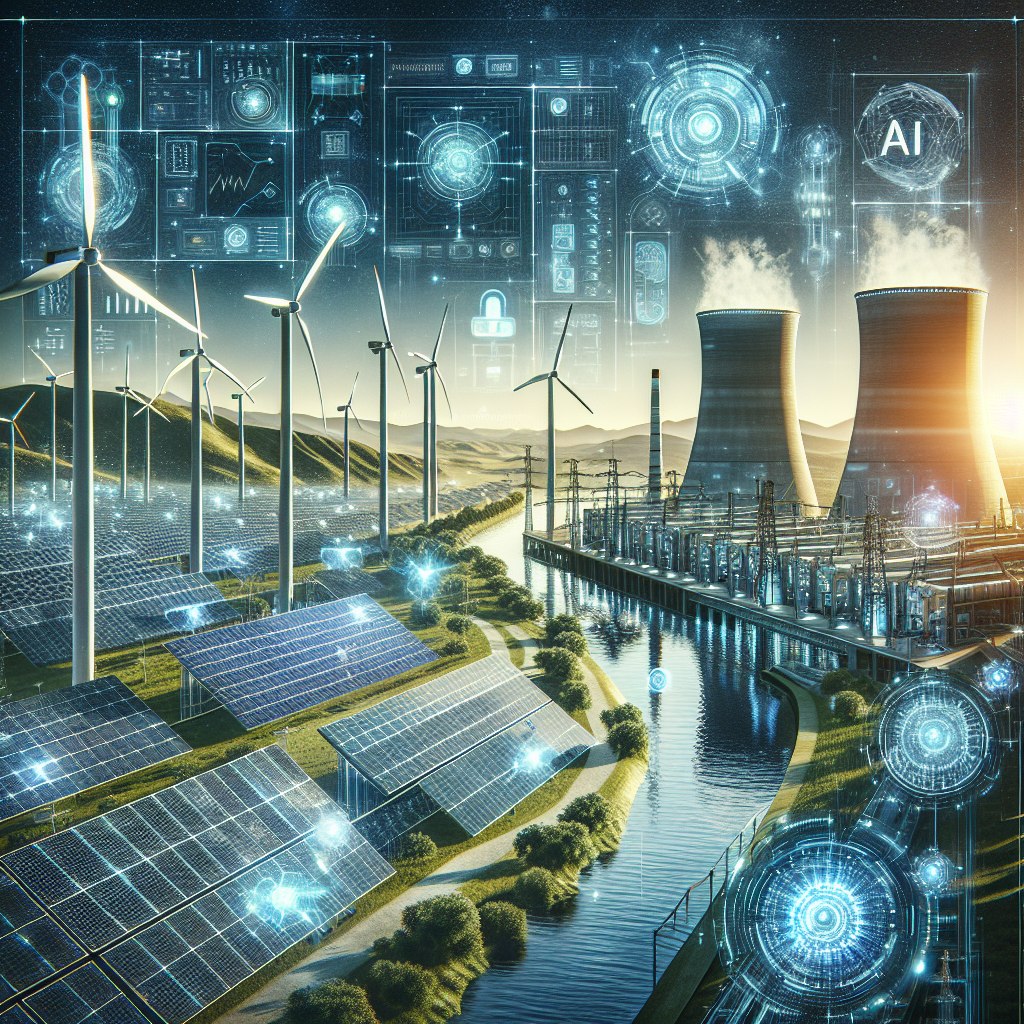In recent years, renewable energy sources such as solar, wind, and hydroelectric power have become increasingly important in the global energy landscape. These sources of energy are essential for reducing greenhouse gas emissions and combating climate change. However, one of the challenges facing renewable energy systems is their variability and intermittency. This means that the availability of renewable energy is not constant and can fluctuate depending on factors such as weather conditions and time of day.
To address this challenge, artificial intelligence (AI) technologies are being increasingly used to enhance the resilience of renewable energy systems. AI can help optimize the operation of these systems, improve forecasting accuracy, and enable better integration with the grid. In this article, we will explore some of the AI applications that are being used to enhance energy resilience in renewable energy systems.
1. Forecasting and predictive maintenance
AI technologies such as machine learning algorithms can be used to improve the accuracy of renewable energy forecasting. By analyzing historical data and real-time information, AI models can predict the output of renewable energy sources more accurately. This allows energy operators to better plan and optimize the use of renewable energy, reducing the reliance on traditional fossil fuel sources.
In addition, AI can also be used for predictive maintenance of renewable energy systems. By analyzing sensor data and performance metrics, AI algorithms can detect potential issues before they occur, allowing for timely maintenance and preventing costly downtime. This proactive approach to maintenance can help improve the reliability and longevity of renewable energy systems.
2. Grid integration and demand response
AI technologies can also help improve the integration of renewable energy sources with the grid. By analyzing data on energy consumption, weather patterns, and grid constraints, AI algorithms can optimize the flow of energy between renewable sources, storage systems, and the grid. This can help reduce energy wastage, improve grid stability, and enhance overall energy efficiency.
Furthermore, AI can enable demand response programs that incentivize consumers to adjust their energy usage based on real-time pricing and grid conditions. By using AI algorithms to predict energy demand and supply, utilities can better manage peak loads and reduce the need for expensive infrastructure upgrades. This can help create a more flexible and resilient energy system that is better equipped to handle fluctuations in renewable energy output.
3. Energy storage optimization
Energy storage is a critical component of renewable energy systems, helping to store excess energy for use during periods of low renewable energy output. AI technologies can help optimize the operation of energy storage systems, ensuring that energy is stored and discharged efficiently. By analyzing data on energy demand, weather conditions, and grid constraints, AI algorithms can determine the optimal times to charge and discharge energy storage systems, maximizing their effectiveness and reducing energy costs.
In addition, AI can also be used to optimize the design and placement of energy storage systems within renewable energy systems. By analyzing factors such as energy production, consumption patterns, and grid requirements, AI algorithms can help determine the most cost-effective and efficient configuration of energy storage assets. This can help improve the overall resilience and reliability of renewable energy systems.
FAQs
Q: How can AI improve the forecasting of renewable energy output?
A: AI technologies such as machine learning algorithms can analyze historical data and real-time information to predict the output of renewable energy sources more accurately. This can help energy operators better plan and optimize the use of renewable energy, reducing the reliance on traditional fossil fuel sources.
Q: How can AI help optimize energy storage systems in renewable energy systems?
A: AI algorithms can analyze data on energy demand, weather conditions, and grid constraints to determine the optimal times to charge and discharge energy storage systems. This can maximize the effectiveness of energy storage systems and reduce energy costs.
Q: What are some of the benefits of using AI for enhancing energy resilience in renewable energy systems?
A: Some of the benefits of using AI include improved forecasting accuracy, better grid integration, proactive maintenance, and optimized energy storage. These benefits can help create a more flexible and resilient energy system that is better equipped to handle fluctuations in renewable energy output.
In conclusion, AI technologies have the potential to revolutionize the way we generate, store, and distribute renewable energy. By leveraging AI applications such as forecasting, grid integration, and energy storage optimization, we can enhance the resilience of renewable energy systems and accelerate the transition to a sustainable energy future. As the demand for renewable energy continues to grow, AI will play an increasingly important role in ensuring the reliability and efficiency of our energy systems.

